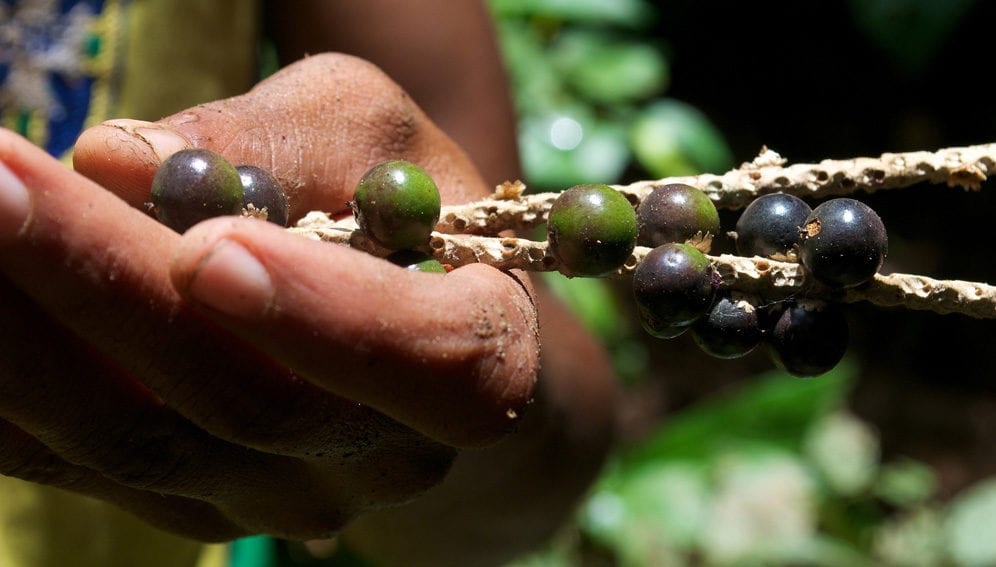12/01/19
Açaí fruit can transmit Chagas disease

Send to a friend
The details you provide on this page will not be used to send unsolicited email, and will not be sold to a 3rd party. See privacy policy.
[SÃO PAULO] Artisanal juice made with açaí berries, the fruit of a palm that grows in the rainforests of northern Brazil, could be a major source of infection with Trypanosoma cruzi, the parasite that causes Chagas disease, two studies suggest.
The disease affects around eight million people worldwide according to the World Health Organisation (WHO), and is transmitted by blood-sucking triatomine bugs.
“The findings reinforce the hypothesis that in the Amazon region, açaí juice prepared in an artisanal way is one of the sources of infection by the parasite.”
Marcus Lacerda, Tropical Medicine Foundation
Symptoms of the disease — including fever, headaches and general weakness — can appear in the first months of incubation. However, most victims do not show signs of the disease, making early diagnosis difficult, often leading to a chronic stage with cardiac and digestive complications.
One of the papers, published this month (January) in Emerging Infectious Diseases, studied ten individuals in the cities of Manaus and Labrea, in the Brazilian state of Amazonas, with typical symptoms. The researchers found that these patients were infected with the same variety of parasite found in artisan açaí juice they had consumed days earlier.
“The findings reinforce the hypothesis that in the Amazon region, açaí juice prepared in an artisanal way is one of the sources of infection by the parasite,” says Marcus Lacerda, a physician at the Tropical Medicine Foundation in Manaus, and an author of the study.
Another study, published in the magazine Memórias do Instituto Oswaldo Cruz, confirms that spikes in Chagas disease incidence in Pará, one of the country’s highest açaí juice-consuming states, is associated with the harvest season of the fruit between August and December.
The studies suggest that people can become infected by consuming artisan juice made from açaí berries. The fruit comes into contact with the faeces of triatomine insects during processing and storage, while kept in open baskets. Fermenting açaí fruit attracts the triatomine insect.
Because of its antioxidant qualities, acai berries are a popular healthy option for people looking for alternative maintenance treatments for cardiovascular, digestive, and cellular health, among others.In Belém, the capital of Pará, it is estimated that 200,000 litres of açaí are consumed per day during harvest season — double the quantity consumed in other seasons. This makes it the second most consumed food in the city during that season.
Part of the local production is exported to other regions of Brazil, and further afield to the US and European countries. South-East Asia is also a significant market for acai fruit.
But Carmenchu Marie Echiverri-Villavicencio, an infectious disease physician at the Makati Medical Center, Philippines, assures consumers of artisanal acai juices in South-East Asia have little to be concerned about.
“Because of the pasteurisation process, we are relatively safe from being infected by Chagas disease,” she says.
This piece was produced by SciDev.Net’s Latin America and Caribbean desk.













